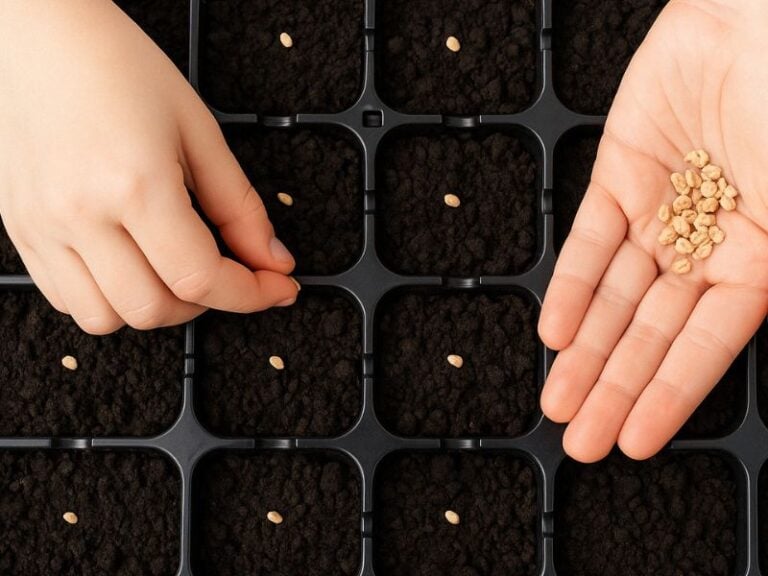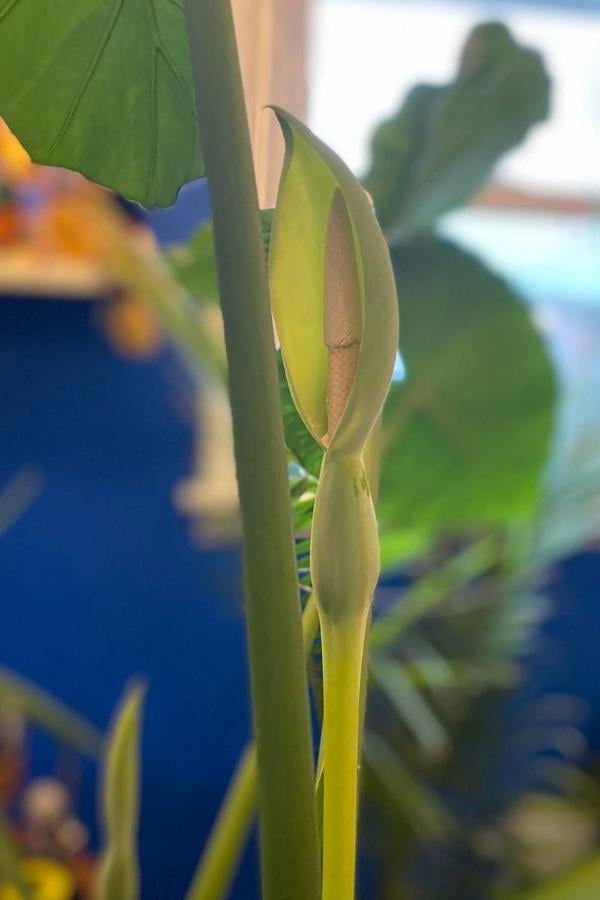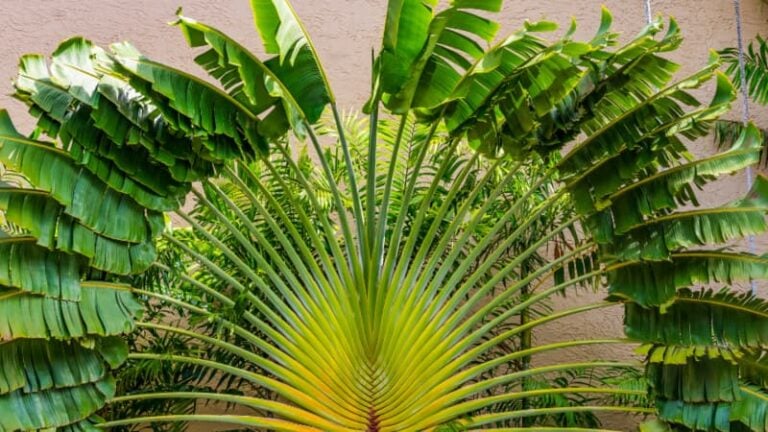There’s no doubt that humidity is the most overlooked aspect of indoor plant care. When things go wrong with your indoor plants, most of us think about watering, light levels, and soil quality, but humidity is rarely considered.
But have no fear! You can bring the steamy air that most indoor plants crave right into your home using two simple and effective methods
I’ll show you how to make a humble pebble tray, a cheap, effective way to provide good, consistent humidity for even the most demanding of leafy divas.
Contents
- Do Humidity Trays Really Work?
- What Is a Pebble Tray?
- What Does a Pebble Tray Do?
- How to Make a Pebble Tray at Home
- How to Use a Pebble Tray
- The Benefits of Humidifiers for Houseplants
- Signs Your Plant Needs More Humidity
- Which Plants Enjoy Pebble Trays?
- Pebble Tray vs Humidifier (Pros and Cons)
- Personal Experience
Do Humidity Trays Really Work?
Using pebbles and water to create humidity trays for your indoor plants is an excellent and very effective way to provide gentle, easy-to-manage humidity to your plants. Making and maintaining them is straightforward, and they can be tailored to meet your specific requirements.
What Is a Pebble Tray?
Water, pebbles, and stones, usually large flat river stones or similar, are placed in a shallow tray or saucer and allowed to soak. These containers can range in size from a small saucer filled with aquarium gravel to large baking trays, plastic storage tubs, and even larger containers.
As the water in the tray evaporates, it adds a small amount of humidity to the air nearby that can be easily controlled. The stones aid in controlling the rate of evaporation by regulating the temperature of the water.
You can use small to separate different groups of plants. Many people prefer to construct large trays and place their plants on the dry tops of the stones, above the level of the water.
This allows the plant to receive a gentle upwelling of moisture on a consistent basis without putting its roots in danger.
What Does a Pebble Tray Do?
With a pebble tray, you can add some gentle humidity to the air around your plants. The natural evaporation of all exposed water contributes to the increase in humidity in the surrounding environment.
A carefully planned tray of water placed next to your growing area allows the natural process to provide an additional level of humidity for your houseplants that changes depending on the weather.
In dry weather and under strong airflow, water evaporates more quickly, and the water in your pebble tray is no exception.
If the humidity level in your growing environment is already adequate, the tray will not add much to it. However, if the air is dry, the water in the tray will evaporate more quickly.
The stones in the tray also aid in the control of evaporation. When it’s hot outside, the stones heat up. They warm the water, which produces more humidity, which your plants require to avoid dehydration.
In colder weather, however, the stones chill the water, resulting in lower humidity. This guards your plants against fungal diseases that thrive in cold, humid environments.
Pebble trays self-regulate, providing just the right amount of extra humidity at precisely the right time for your indoor jungle. They get more in hot, dry weather and less in cool or damp weather. It’s one of my favorite low-tech methods for keeping my plants healthy and lush.
How to Make a Pebble Tray at Home
It’s surprisingly simple to make your own pebble tray at home. Let’s take a look at what you’ll need before we get started on how to make a pebble tray.
A shallow tray suited to location
Place a shallow dish or tray that can hold water and is large enough to accommodate the plants that require additional moisture. Alternatively, a simple plastic tray or a decorative ceramic number can be used, which is equally as effective.
Decorative Pebbles or Rocks
I like river stones, but decorative rocks are also good and affordable.
Clean Water
Only use distilled or filtered water. Avoid using tap water as it can leave mineral deposits on your stones over time.
To Build Your Tray
- First clean your tray with warm water and dish soap.
- Rinse your stones in clean flowing water to remove any loose dust or other debris.
- Fill your tray with stones until they cover the bottom entirely. Give them a gentle shake so they settle firmly on the bottom. If you are using small stones, fill the tray to just below the top of the tray.
- Fill your pebble tray with water until only the tops of your stones are visible above the water line.
How to Use a Pebble Tray
Placing your tray is simple, and I have a few preferred methods of deploying these useful devices throughout my growing environment.
One method is to arrange groups of tropical plants around your tray, with the pebbles serving as a focal point. It’s almost like having a miniature pond or water feature right in your own backyard, with nodding leaves nearby.
As the plants themselves transpire, they will add additional humidity to the air, allowing you to create a miniature jungle in the middle of a grove of tropicals.
Some people, such as stone statues or polished crystals, like to add interesting small pieces of décor to the tray, which I’ve seen done before. With a little thought, they can become quite the focal point.
Another option is to place larger plants directly on the surface of the stones themselves as an alternative. Because they are more stable, large flat river stones are the best choice for this technique.
Humidity will rise gently from the base of the plant, much as groundwater evaporation creates humidity in the jungles and forests your indoor plants once called home.
No matter how you decide to place your tray, it’s important to keep the water clean. Fungal diseases love filthy water, so change your water if it becomes cloudy or green. Make sure to give the lot a good wash in warm water and dish soap if they start to look mucky.
Checking for mosquito larvae is also important for those of us who live in warmer climates! With these little bloodsuckers breeding ill-attended or forgotten trays, I’ve had more than one rude surprise over the years. They like to hide under the stones, so keep an eye out for them now and then.
Change the water regularly and keep it free of debris and you and your plant will both be healthier all around.
The Benefits of Humidifiers for Houseplants
A humidifier is another option for increasing humidity levels in your home. The devices are small electric heaters that heat water to a constant and gentle temperature, thereby providing a continuous stream of humidity to your house or apartment.
Electric humidifiers are a fantastic way to ensure that your growing environment is adequately humidified. In addition to requiring very little maintenance, they can be quite attractive in their own right.
There are some disadvantages to using them. Even a cheap one will cost you more than a pan of rocks, and any electric device will increase the amount of money you spend on electricity.
If you have a large collection of plants and you choose to use a few humidifiers, you may find yourself feeling the pinch! They are also larger and take up more space, and they are generally more difficult to conceal.
Signs Your Plant Needs More Humidity
A lack of moisture in the air will cause your poor plant to dry out, from the leaves inwards. Take a look at the leaves on your plant. Are they starting to turn brown? Crispy edges on your leaves are a classic sign that your plant requires more humidity.
The leaves are drying out from the edges inward, with the inner part being nourished by the roots and the outer part being unable to maintain hydration due to the lack of nutrients from the roots.
Signs of under-watering in otherwise well-cared-for plants are also a good indication that you need to add some moisture to the air around your vibrant treasures to keep them looking their best.
There are specific signs that each type of plant needs water, but in general, droopy leaves on plants in dry soil indicate that the plant is dehydrating and should be watered as soon as possible.
Despite the fact that it may be tempting to simply pick up the watering can and get to work, if your problem is low humidity, you may find yourself water-logging the soil.
It has been my experience that over-watering is the most common cause of dead houseplants. It is therefore far better to water the air rather than the plant.
Which Plants Enjoy Pebble Trays?
The more humidity a plant needs the greater the chance it will benefit from a humidity tray.
Notorious divas like calatheas definitely benefit from a special little pebble tray to rest upon like a throne, and alocasias and caladiums also love the direct local humidity they provide.
A pebble tray is also an excellent choice for plants that thrive in high humidity but do not like having their leaves wet. In the case of Begonias, which are susceptible to fungal disease, a gentle humidity that does not dampen their foliage will be much more beneficial to them.
Consider a pebble tray for:
- Calatheas
- Alocasias
- Anthuriums
- Caladiums
- Ctenanthe
- Syngonium
- Philodendrons
- Orchids
- Ferns
- Begonias
In all honesty, if your growing environment is air-conditioned or centrally heated, there’s no reason not to provide a pebble tray with any species of indoor plants. Even plants that will tolerate lower humidity like pothos or spider plants will thrive with a bit more moisture in the air.
Climate control systems that are ideal for human comfort almost always dry out indoor plants. A simple tray of pebbles is an easy insurance policy and one that costs little to set up and nothing to maintain.
Pebble Tray vs Humidifier (Pros and Cons)
Both pebble trays and humidifiers are great ways to add moisture to the air. But they have their pros and cons:
Pros and Cons: Pebble Tray
Pebble trays are flexible. They can be crafted in any size you need and placed wherever you please. They cost very little to make and are free to run. Your pebble trays can be hidden under the plants themselves or used as a central feature. They are silent and unobtrusive.
However, they need frequent attention. They must be topped up regularly and kept free of dust and dirt. Without care they dry out or become vectors for disease and pests. They also provide an overall low and gentle humidity that may be insufficient in very dry environments.
Pros and Cons: Electric Humidifier
Humidifiers produce large amounts of humidity that is reliable and constant. They can be quite attractive additions to your home, with many brands incorporating night lights into their machines to provide a pleasant glow.
They produce a gentle constant purr when operating that some find comforting. However, humidifiers are tied to a power source and are less flexible in terms of placement.
They are also significantly more expensive than a pebble tray and drive up your electricity costs typical of running any small electrical appliance.
They also require airflow to distribute their moisture, or they will only mist the area immediately around them.
A powerful humidifier in an area of poor airflow may well generate ideal conditions for mold on your walls and fungal infections on your plants.
Many enthusiasts will pair humidifiers with small fans, which is an additional cost and source of the noise.
While not typically loud, some find the white noise generated by the humidifier itself to be distracting.
Pebble Tray vs Humidifier: Which is Better?
Like all things to do with your gardening, consider your own circumstances before leaping in and trying one or the other.
Pebble trays are great for larger collections scattered around growing environments with gentle climate control or none at all.
Humidifiers are better for dry climates, all the plants in one spot, or homes and offices with powerful central air and the good ventilation that typically brings.
Consider costs, too. If you are wary of splashing out on a fancy humidifier and matching fan, perhaps consider a pebble tray first.
Personally, I prefer pebble trays. My growing environment is naturally humid, so my plants only need gentle support here and there.
I also have little space for humidifiers among my collection, so placing a large pot on a tray of stones is an ideal way to fit a bit of extra moisture into the area.
Ultimately you know your own indoor jungle best. With a bit of trial and error, even the most hesitant or uncertain can get the humidity just right for any plant collection.
Personal Experience
I hear people saying that humidity pebble trays don’t make any difference and I know from my own personal experience that this is not true.
So I decided to do an experiment with my humidity gauges. I placed a humidity gauge on an upside-down jar on top of the pebble tray (so it would be at the level of the plant’s leaves) and another one less than a foot away. As you can clearly see, the humidity level is drastically different.












